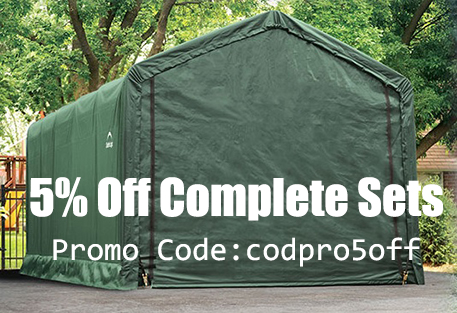The Ultimate Guide to Tarps: Types, Uses, and How to Choose the Right One
Apr 15th 2025
Whether it's a backyard renovation, a construction job or an outdoor adventure, a tarp is one of the most versatile and dependable tools you can have. These durable covers protect from the elements, secure materials and extend the life of outdoor equipment, making them invaluable for a wide range of applications.
For DIYers, tarps come in handy for everything from covering furniture during home improvement projects to creating temporary shelters for outdoor workspaces. If you're a contractor, you know the importance of heavy-duty tarps for shielding construction materials, preventing water damage and securing job sites. And for outdoor enthusiasts, a reliable tarp is a must-have for camping, boating and emergency preparedness.
With so many types and sizes available, it's easy to find a tarp that meets your specific needs. However, choosing the wrong one can mean wasted money and inadequate protection. That's why it's crucial to select the right tarp for durability, protection and efficiency.
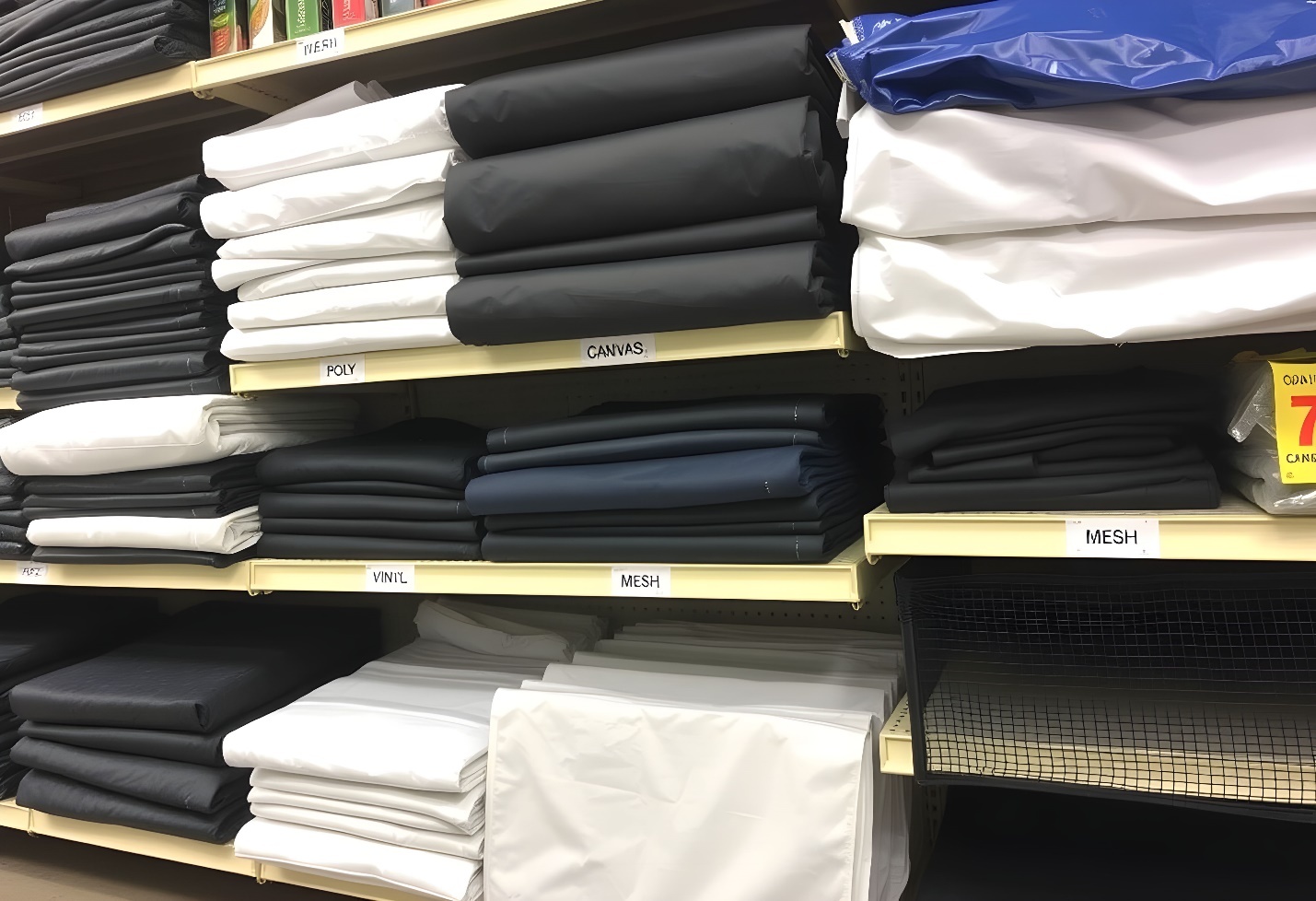
The Importance of Choosing the Right Tarp
Tarps are not all created equal. Picking the wrong one can lead to you experiencing tears, leaks or ineffective coverage, leaving your project exposed to the elements. To ensure maximum durability and performance, consider the following factors:
Material Matters
Poly Tarps. Affordable and lightweight, these are great for short-term use like covering firewood, temporary outdoor storage and protecting work areas.
Canvas Tarps. These breathable, heavy-duty tarps are excellent for construction, painting and protecting equipment that needs airflow.
Vinyl Tarps. These tough tarps are ideal for long-term industrial applications, such as truck covers, job site enclosures and marine use.
Mesh Tarps. Perfect for shade protection and wind reduction, they are often used for scaffolding, dump truck loads and garden applications.
Fire Retardant Tarps. A must-have for welding areas, industrial job sites and fire-prone environments where safety regulations require flame-resistant materials.
Consider the Thickness and Strength
A tarp's durability is often measured in mil thickness, with higher numbers indicating greater strength and longevity:
- 5-8 Mil: Light-duty tarps for temporary covers.
- 9-12 Mil: Medium-duty tarps suited for roof repairs and equipment protection.
- 13-18 Mil: Heavy-duty tarps for long-term outdoor use, industrial projects and vehicle protection.
- 19+ Mil: Super-heavy-duty tarps built for extreme weather conditions, high-stress applications and commercial use.
Weather Resistance Features
The best tarp can withstand tough outdoor conditions. When selecting the right one, look for:
- Waterproof coatings to prevent rain and snow damage.
- UV resistance to stop sun exposure from degrading the fabric.
- Rust-proof grommets and reinforced edges for extra strength and security.
Choosing the Right Size
It's always better to go slightly larger than needed. Why? A tarp that's too small won't fully cover what you need to protect. Measure carefully and consider whether you need extra room for tie-downs and securing edges.
Types of Tarps
It's essential to go further into understanding the different tarp materials and their strengths. Materials perform differently under outdoor conditions and knowing which one to choose can help you provide the best coverage for whatever it is you're protecting.
Below, we'll break down the most common types of tarps, their strengths and the best uses for each.
Poly Tarps: Affordable, Lightweight and Versatile
What Are Poly Tarps?
Polyethylene (poly) tarps are among the most commonly used tarps because they're lightweight, waterproof and budget-friendly. These tarps are made from woven polyethylene fabric with a laminated plastic coating, making them resistant to moisture and mildew.
Best Uses for Poly Tarps
- Temporary outdoor covers for furniture, firewood and equipment
- Camping shelters and ground covers
- Roof repairs and emergency leak protection
- Protecting materials at job sites
Key Features
- Waterproof. Ideal for covering outdoor equipment or woodpiles.
- Lightweight and easy to handle. Makes them simple to use for temporary projects.
- Different duty levels available. From light-duty (5-6 mil) to heavy-duty (12-16 mil) options.
- Affordable. A great budget-friendly choice for short-term protection.
Downsides
- Less durable than canvas or vinyl and they are prone to tearing over time.
- UV exposure can weaken the material if left in direct sunlight for too long.
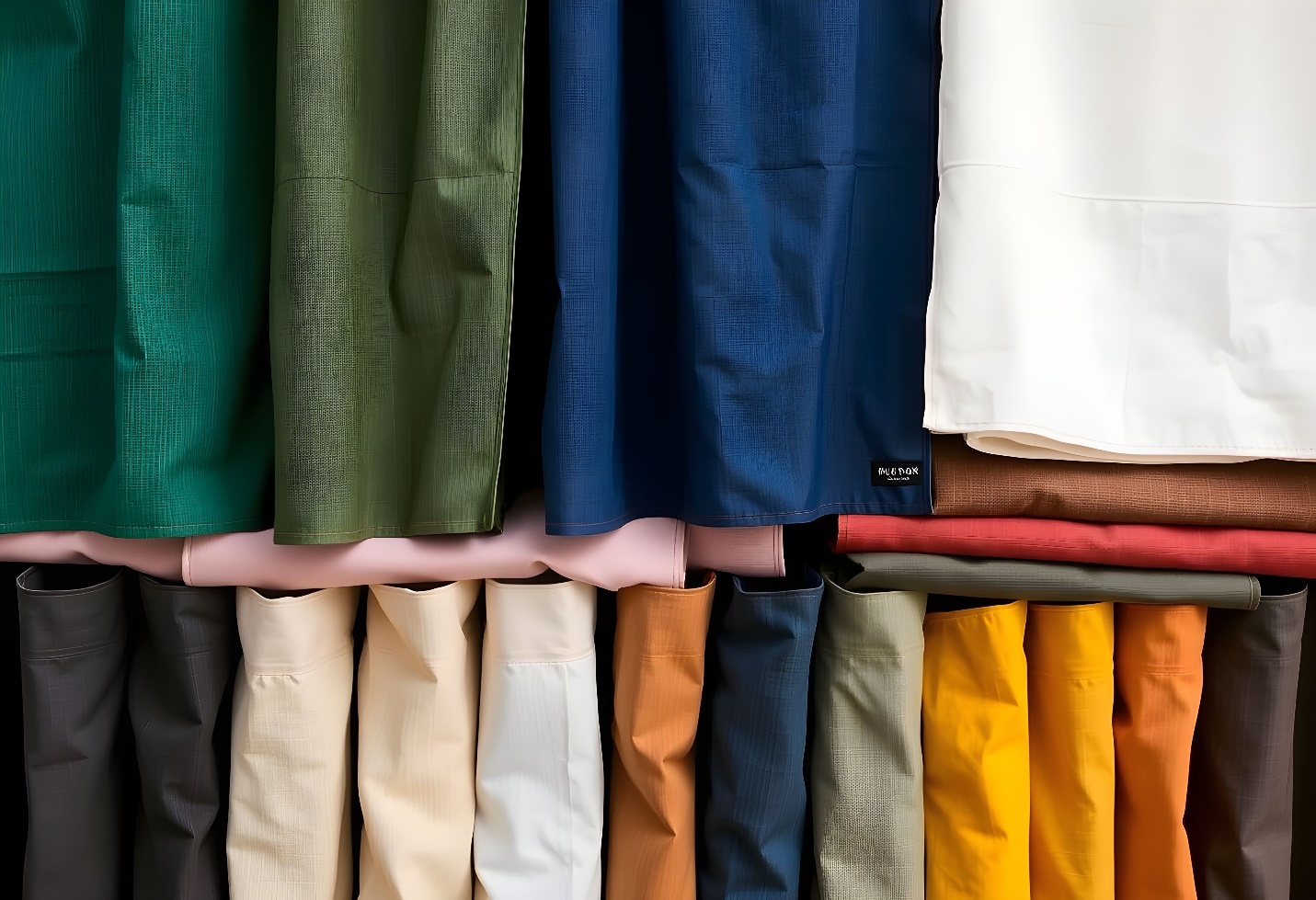
Canvas Tarps: Breathable and Heavy-Duty
What Are Canvas Tarps?
Made from woven cotton or polyester fabric, canvas tarps are known for their breathability and rugged durability. These tarps are a great choice when you need long-lasting protection that won't trap moisture.
Best Uses for Canvas Tarps:
- Construction sites to protect machinery and tools
- Painting projects as drop cloths
- Covering equipment that needs airflow to prevent condensation buildup
- Protecting farm and ranch supplies
Key Features
- Breathable. Reduces condensation, preventing rust and mold.
- Strong and durable. It can handle heavy-duty jobs with ease.
- Less prone to flapping in the wind. The fabric has a natural weight that keeps it stable.
- Waxed or untreated options. Waxed canvas tarps are water-resistant, while untreated canvas provides airflow.
Downsides
- Heavier than poly tarps, making them harder to maneuver.
- More expensive than other tarp types.
- Not 100% waterproof. They are only water-resistant if they are coated with wax.
Vinyl and PVC Tarps: Industrial Strength for Maximum Protection
What Are Vinyl and PVC Tarps?
If you need the most durable, long-lasting tarp, vinyl and PVC tarps are the way to go. Made from polyvinyl chloride (PVC)-coated polyester, these tarps are super tough, waterproof, UV-resistant and oil-resistant, making them ideal for heavy-duty applications.
Best Uses for Vinyl and PVC Tarps
- Truck and trailer covers
- Industrial and commercial storage protection
- Agricultural applications (hay and grain protection)
- Job site enclosures and welding curtains
Key Features
- Extremely durable. Vinyl tarps last years, even under tough conditions.
- Waterproof and UV-resistant. Perfect for outdoor and long-term use.
- Resistant to chemicals and oils. Ideal for industrial settings.
- Fire-retardant options are available. Adds extra safety for high-heat work areas.
Downsides
- More expensive than poly and canvas tarps.
- Heavier and harder to handle due to their thick, reinforced structure.
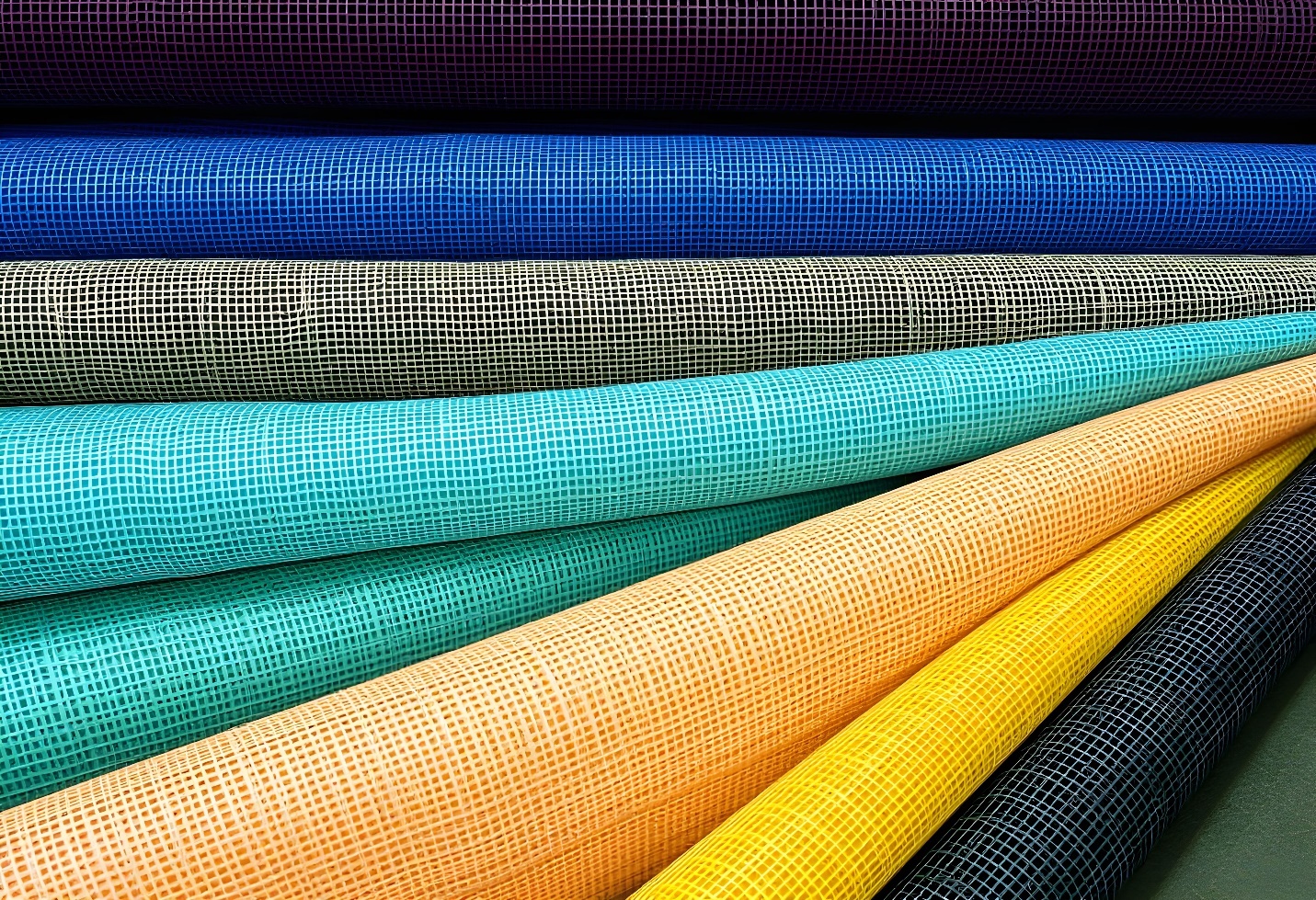
Mesh Tarps: Airflow and Shade Protection
What Are Mesh Tarps?
Mesh tarps are made from woven polypropylene or vinyl-coated polyester, allowing air and light to pass through while still providing shade and debris control.
Best Uses for Mesh Tarps
- Shade protection for patios, greenhouses and gardens
- Covering dump truckloads and cargo that needs ventilation
- Privacy screens for construction sites and fences
- Pool covers and windbreak barriers
Key Features
- Allows airflow. Prevents overheating in covered areas.
- Great for shade. Reduce direct sunlight without blocking all light.
- Weather-resistant. Handles rain and wind while allowing water to drain.
- Lightweight but durable. Easier to work with than solid vinyl or canvas tarps.
Downsides
- Not waterproof. They won't fully protect against rain.
- Less coverage for sensitive items. They do not completely block dust, dirt or debris.
Fire Retardant Tarps: Essential for High-Heat and Safety Applications
What Are Fire Retardant Tarps?
Fire-retardant tarps are chemically treated to slow down or resist ignition, making them a critical safety tool for job sites, welding areas and industrial applications. These tarps meet NFPA 701 and CPAI-84 fire safety standards, ensuring compliance with fire regulations.
Best Uses for Fire Retardant Tarps
- Welding curtains and job site enclosures
- Covering machinery and electrical equipment
- Indoor and outdoor fire-safe storage
- Temporary shelters in hazardous environments
Key Features
- Flame-resistant treatment. Provides extra safety for high-heat applications.
- Durable and weather-resistant. They can withstand heavy-duty industrial use.
- Available in poly, vinyl and canvas materials. Choose the right level of strength for your needs.
Downsides
- They tend to be more expensive than non-fire-rated tarps.
- The fire-retardant chemicals may wear off over time.
Let's explore the most popular everyday uses for each type of tarp.
Popular Uses for PVC Tarps
Truck and Trailer Covers. Provides reliable weather protection for cargo during transport.
Industrial and Construction Use. Shields heavy machinery, scaffolding and job sites from harsh conditions.
Greenhouse Covers. They help regulate temperature and humidity while providing UV protection for plants.
Sports Field Covers. Protects baseball, football or soccer fields from rain, ensuring playability.
Heavy-Duty Outdoor Curtains. Used in warehouses, welding stations and agricultural areas to block wind and debris.
PVC tarps are the best choice when durability, chemical resistance and long-term outdoor use are priorities.
Popular Uses for Canvas Tarps
Covering Classic Cars and Equipment. Breathable material prevents condensation buildup that can cause rust.
Construction and Painting Projects. Protects floors, furniture and job sites from dust, paint and debris.
Agriculture and Farming. Covers hay bales, tractors and farming equipment while allowing airflow to reduce moisture buildup.
Woodworking and Workshop Covers. Shields tools and materials from sawdust and debris without trapping heat.
Landscaping and Gardening. Used as a protective ground cover when moving soil, mulch or plants.
Canvas tarps are ideal for situations where breathability is important, preventing moisture from becoming trapped underneath.
Popular Uses for Vinyl Tarps
Truck and Trailer Covers. Ensures cargo remains dry and secure on long hauls.
Farm and Agricultural Use. Protects hay, grain and livestock areas from rain and wind.
Oil and Chemical Industry. Resistant to spills, making them ideal for worksite containment and equipment protection.
Heavy-Duty Roofing and Construction Covers. Used for long-term coverage of exposed buildings and scaffolding.
Gym Floor and Event Covers. Shields floors from scratches, moisture and heavy foot traffic during events.
Vinyl tarps excel in environments where strength and long-lasting waterproofing are required.
Popular Uses for Mesh Tarps
Shade Covers for Patios and Gardens. Blocks harsh sunlight while maintaining air circulation for comfortable outdoor spaces.
Truck and Trailer Load Security. Keeps loose materials like gravel, sand and debris contained during transport.
Construction Safety Screens. Reduces dust and wind impact on scaffolding and job sites.
Privacy Screens for Fences and Yards. Used around residential and commercial properties to create barriers.
Pool and Pond Covers. Provides partial shade while allowing water and airflow to prevent algae growth.
Mesh tarps are best for situations where shade, wind reduction or partial protection is needed without full coverage.
Popular Uses for Fire Retardant Tarps
Fire retardant tarps offer an extra layer of safety by slowing or preventing the spread of flames. While they won't make a fire-proof barrier, they do provide critical protection in areas where heat, sparks or open flames are present.
Welding and Industrial Worksites
These tarps act as protective barriers around work areas, shielding people, equipment and surrounding structures from sparks, molten metal and intense heat. They help reduce fire risks in factories, workshops and construction sites where welding, grinding or cutting is performed.
Construction and Renovation Projects
Fire retardant tarps are widely used in construction zones, especially when working with high-heat tools, torches or near flammable materials. They help contain sparks and flames while also serving as windbreakers, dust barriers and weather protection. Contractors often use them for scaffolding enclosures, temporary walls or covering exposed structures.
Temporary Shelter and Event Tents
Outdoor events, festivals and large gatherings often use fire retardant tarps for tent canopies, stage backdrops and sidewalls. They are often required by local safety codes for large tents used in public events.
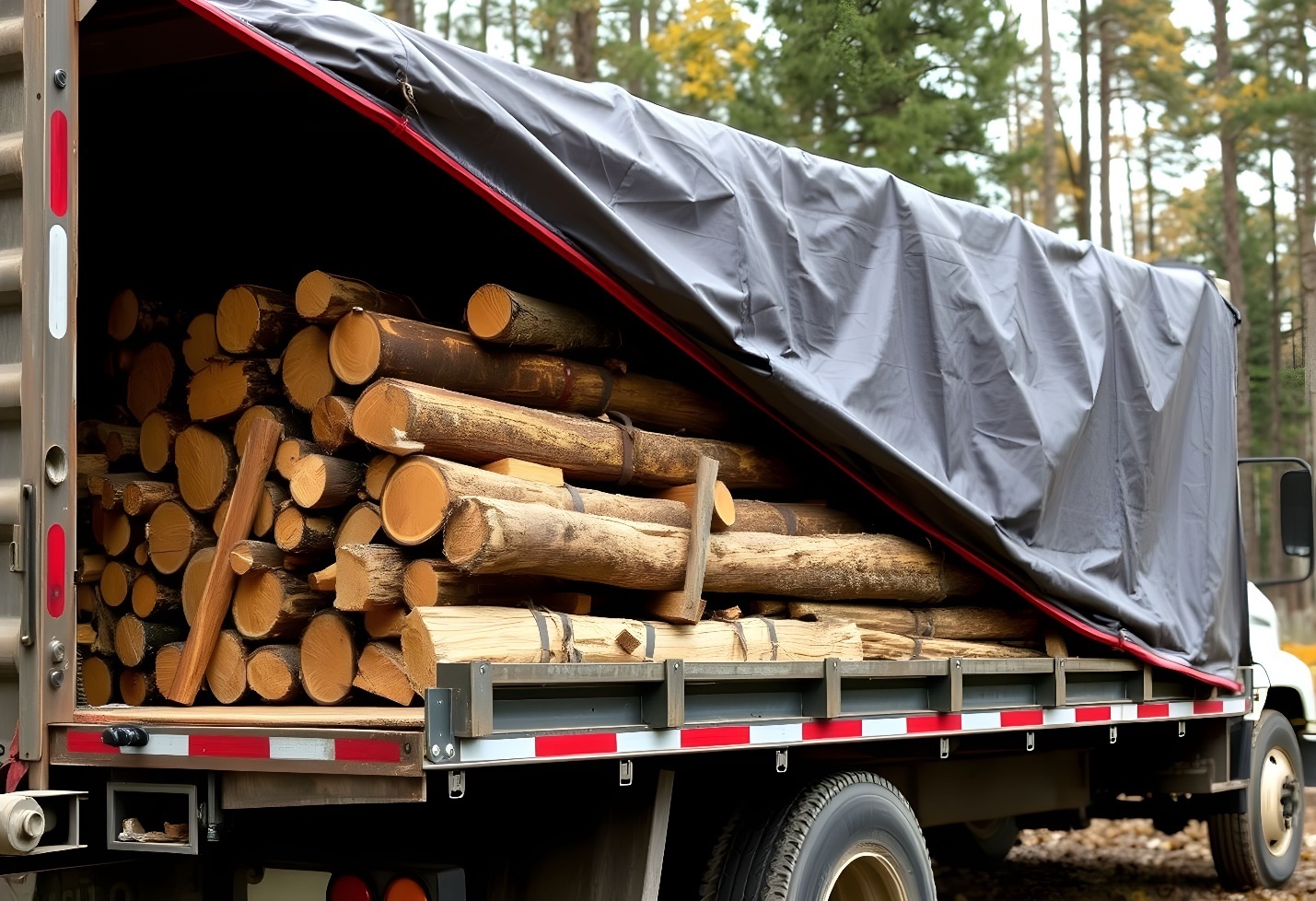
Trucking and Cargo Protection
Fire retardant tarps are used to cover loads that contain flammable or heat-sensitive materials. Haulers transporting equipment, lumber or industrial goods often opt for flame-resistant covers to meet transportation safety regulations and prevent fire hazards during long-distance hauls.
Agricultural and Farm Use
On farms, fire retardant tarps help protect barns, greenhouses and animal shelters where heat lamps or electrical equipment might pose a fire risk. They provide both weather protection and fire safety for hay bales, feed storage and temporary livestock enclosures.
Emergency and Disaster Relief Shelters
During natural disasters or emergencies, fire-resistant tarps are used to create temporary shelters, covering medical stations, food supply areas or staging zones for first responders. These tarps add a layer of safety in relief efforts where portable heaters or cooking stations are in use.
Grill, Smoker and Outdoor Kitchen Covers
For backyard barbecues or outdoor kitchens, fire retardant tarps serve as protective covers for grills, smokers and wood-fired pizza ovens. They provide a safer barrier against flying sparks and keep cooking areas dry without posing a fire hazard.
Shop Canopies and Tarps to find the best selection of tarps for every project.

